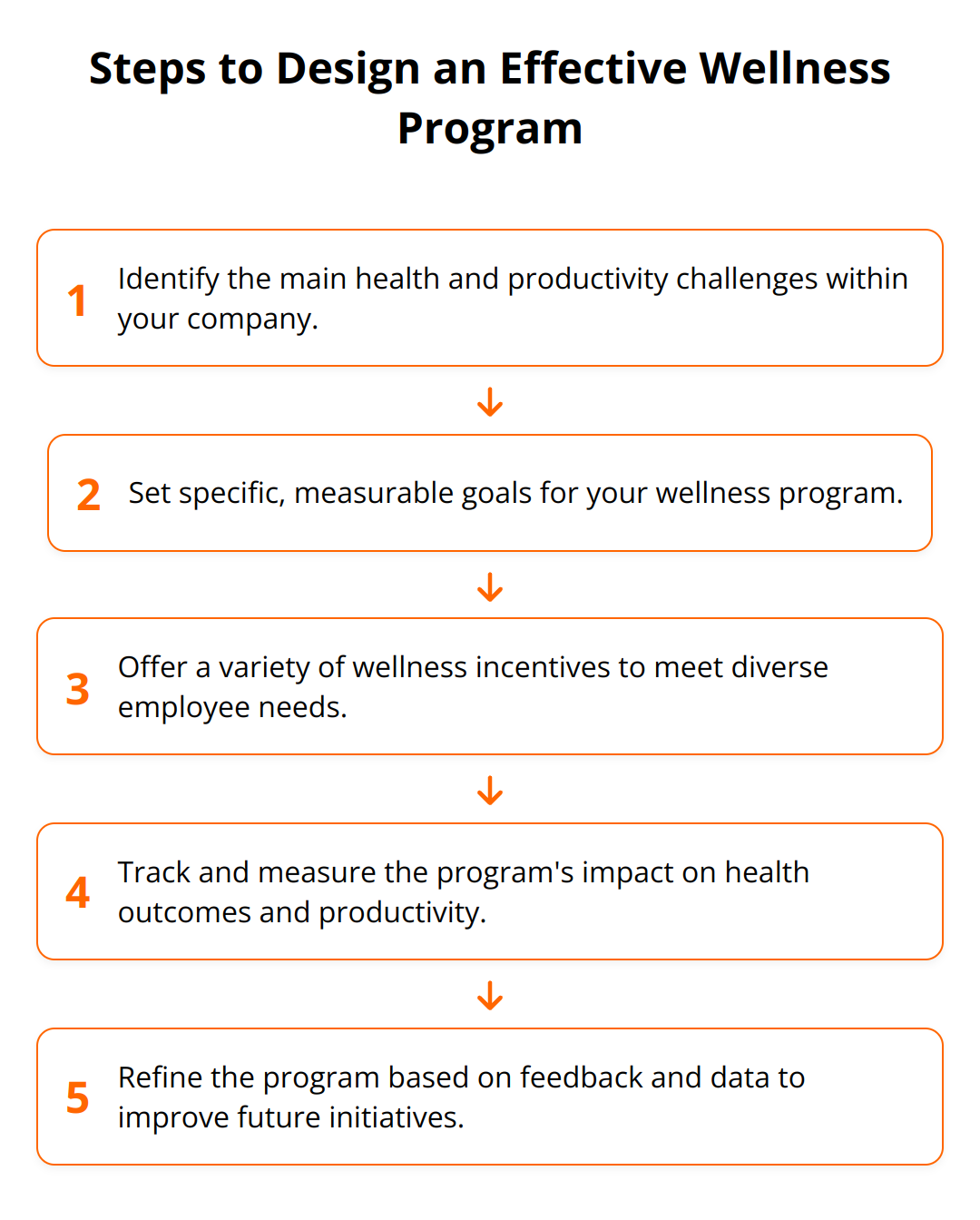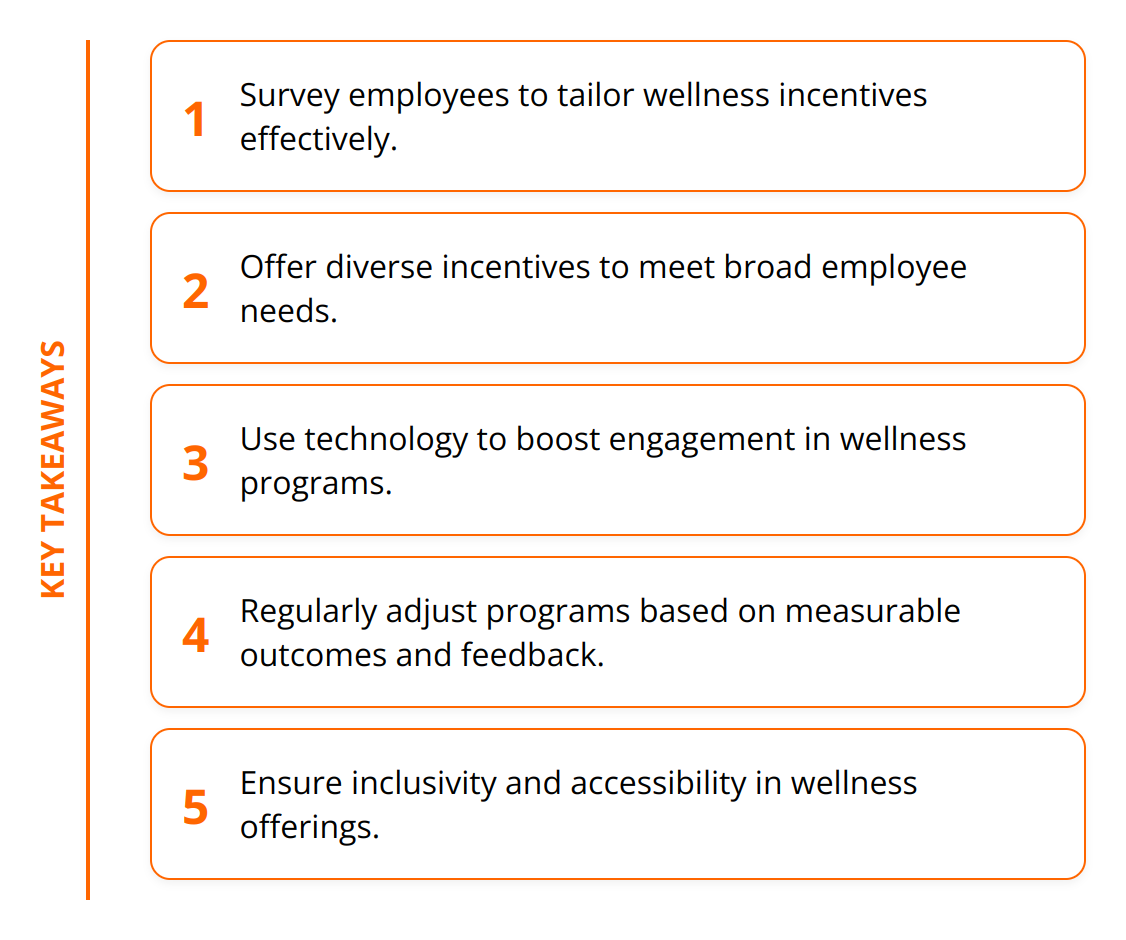
Employee wellness has never been more important, directly influencing productivity, morale, and retention. We at Reward the World recognize the pressing need for effective wellness incentive programs in today’s workplaces. Addressing health-related issues through well-designed incentives can transform the work environment and company culture. This blog post: Employee Wellness Incentives: Practical Tips aims to provide practical tips for implementing impactful employee wellness incentives.
Boosting Wellness and Productivity
The connection between employee wellness and organizational performance is clear and compelling. Healthy employees are more productive, less likely to be absent, and more engaged with their work. Investing in wellness incentives is not just beneficial; it’s a strategic decision to enhance overall performance. Here’s how to tap into that potential effectively.

Elevating Morale with Targeted Incentives
Wellness incentives directly impact morale by showing employees that their well-being is a priority. This consideration boosts their loyalty to the company and increases retention rates. It’s essential to design these programs with the employee’s needs at heart. For instance, offering flexible working hours can significantly reduce stress for those juggling work and personal responsibilities, leading to a happier and more productive workforce.
Tackling Health Issues Head-On
With rising health-related problems in the workforce, such as stress and burnout, it’s crucial to address these issues proactively. Incorporating mental health days, access to counseling services, and stress management workshops can make a substantial difference. These incentives not only acknowledge the challenges employees face but also provide them with the tools to manage their health, reducing absenteeism and improving overall job satisfaction.
Practical Tips for Implementing Wellness Incentives
- Survey Your Employees: Understand their health and wellness needs by conducting surveys. This ensures that the incentives you offer are genuinely valued.
- Set Clear Goals: Define what you aim to achieve with your wellness program—be it reducing absenteeism, enhancing productivity, or improving employee health.
- Offer Variety: People are motivated by different things. A mix of incentives, from gym memberships to educational workshops, can cater to diverse needs.
- Communicate Regularly: Keep your team informed about what wellness incentives are available and how they can participate. Transparency is key to engagement.
- Measure Success: Use data to gauge the impact of your wellness incentives on employee health and productivity. This can help refine future programs.
Wellness is a broad concept that encompasses physical, mental, and emotional health. By carefully selecting and implementing the right wellness incentives, organizations can significantly enhance their workforce’s overall well-being and productivity. Initiatives like personalized rewards strategies have shown to make a meaningful impact in this space. Additionally, understanding the evolution of loyalty programs can provide insights into how best to structure these wellness incentives for maximum engagement and benefit.
Crafting Winning Wellness Programs
When it comes to nurturing a robust workforce, the design of your wellness incentive program plays a pivotal role. A well-thought-out program promotes not only the health of employees but also the overall performance of your company. Here are practical steps to design an effective wellness incentive program that meets the needs of your employees and aligns with your company goals.
Firstly, setting clear, achievable goals is fundamental. Whether your aim is to decrease absenteeism, boost morale, or enhance productivity, having well-defined objectives guides the structure of your wellness incentives. It’s imperative to align these goals with overall business objectives, ensuring that the program contributes significantly to the company’s success.

Offering a variety of wellness incentives is crucial for addressing the diverse needs and preferences of your workforce. This could range from health insurance discounts, which provide financial benefits, to providing fitness trackers that encourage physical activity. Other effective incentives include offering subscriptions to mental health apps, organizing on-site fitness classes, or setting up healthy eating workshops. The key is to offer choices that resonate with a broad spectrum of health and wellness interests among your employees.
Measuring the impact of wellness programs on employee health and company performance cannot be overstated. This involves tracking participation rates, employee feedback, health outcomes, and productivity indicators. Employ the use of surveys and health assessments pre and post-program implementation to gather valuable data. This data not only helps in measuring the success of the current program but also in refining and improving future wellness initiatives.
For practical execution:
- Embed wellness goals into the company’s performance metrics.
- Diversify incentives to capture the full spectrum of employee wellness needs.
- Regularly assess and adapt the program based on measurable outcomes and feedback.

For detailed insights on setting achievable wellness program goals, consider reviewing materials like personalized rewards strategies and evolution of loyalty programs, which can offer additional guidance on tailoring programs that align with employee needs and business objectives effectively.
By taking these steps, companies can create wellness programs that not only improve employee health but also drive meaningful business outcomes.
Adapting Wellness Programs for All
In today’s dynamic work environment, a one-size-fits-all approach to wellness programs is no longer viable. Companies are now tasked with creating wellness incentives that cater to the diverse needs of their workforce, including those in remote, hybrid, and in-office settings. It’s about crafting programs that everyone can access and benefit from, regardless of their location.
Diversity in Work Environments
The rise of remote and hybrid work models has significantly changed how we think about employee wellness. These changes call for flexible wellness incentives that can be easily adapted to different work settings. It’s not just about physical health; mental and emotional wellness are equally important, especially for remote employees who may face isolation. For those in-office, creating a physical space dedicated to relaxation or offering in-person wellness workshops can be beneficial.
For remote and hybrid teams, virtual fitness classes or online subscriptions to wellness apps offer a way to stay engaged with wellness goals. Companies should also consider offering stipends for home office setups to encourage a healthy work environment, showing that employee comfort and well-being are priorities regardless of their work location.
Leveraging Technology for Engagement
Technology plays a crucial role in ensuring widespread engagement in wellness programs. Utilizing digital platforms for wellness challenges or mindfulness sessions enables employees to participate at their convenience. Moreover, gamified wellness apps can increase participation by making health and wellness activities more engaging and fun. These platforms also offer the added benefit of tracking progress, which can be incredibly motivating for employees.

For more insights on incorporating technology into wellness programs, exploring options like digital rewards can offer guidance on modernizing your approach to employee wellness.
Ensuring Inclusivity and Accessibility
Creating an inclusive wellness program means ensuring that it’s accessible to everyone, regardless of their physical abilities, location, or personal circumstances. This involves offering a range of wellness incentives that cater to different needs and preferences. It’s not only about physical activities; consider including initiatives focused on mental health, financial wellness, and social connectivity.
To ensure inclusivity, feedback from all employee demographics should guide the wellness program’s design. This can be facilitated through anonymous surveys or suggestion boxes, providing valuable insights into what employees are really looking for in a wellness program.
In conclusion, adapting wellness programs to accommodate the diverse needs of modern workplaces is essential for their success. By tailoring programs to fit all work environments, leveraging technology for engagement, and ensuring inclusivity, companies can create meaningful and effective wellness initiatives that benefit all employees.
Here are a few practical tips to keep in mind:
- Flexible Options: Provide a mix of in-person and virtual wellness activities.
- Technology Utilization: Use apps and platforms to facilitate engagement.
- Inclusive Design: Ensure programs cater to a wide range of wellness needs.
- Employee Feedback: Regularly seek input to refine and adjust offerings.
- Accessibility: Make sure all employees can easily access the programs provided.
Creating a well-rounded and adaptable wellness program is not just beneficial for employees; it’s a strategic investment in the future success of the company.
Final Thoughts
In the journey towards fostering a healthier, more productive working environment, employee wellness incentives stand out as a beacon of progress. The practical tips shared underscore the importance of tailoring wellness programs to meet the diverse needs of the workforce, utilizing technology to enhance engagement, and ensuring inclusivity. Actions such as surveying employees to grasp their wellness needs, setting clear objectives for your programs, offering a variety of incentives, and maintaining open communication are essential steps toward creating an impactful wellness initiative.

However, the efficacy of these wellness programs hinges on continuous evaluation and adaptation. It’s not enough to launch a wellness program and hope for the best. The workforce, workplace dynamics, and wellness technologies evolve, and so should your program. Regularly gathering feedback, analyzing participation and outcome data, and staying abreast of wellness trends allows for the refining of programs to better serve employees’ needs over time.
At the heart of successful wellness incentives is a dedication to viewing employee wellness as an ongoing journey rather than a destination. Making incremental improvements based on employee feedback and measurable impacts ensures that wellness programs remain relevant, engaging, and beneficial for all involved.
We at Reward the World are committed to aiding organizations in crafting these meaningful experiences for their employees. Our global incentives platform offers a diverse array of rewards that can elevate your wellness programs and make them more appealing to your workforce. With our seamless integration and robust analytics, we provide the tools necessary for any business looking to enhance their employee recognition efforts effectively and efficiently.
In sum, the key to unlocking the full potential of your workforce lies in crafting well-thought-out wellness incentives that resonate with everyone. By doing so, you not only enhance the physical and mental wellbeing of your employees but also contribute significantly to your organization’s success. Discover how our services can help you achieve these goals by visiting Reward the World.
In conclusion, the path to a healthier, more productive, and engaged workforce is through well-designed, continuously evolving wellness programs. Remember, a happy workforce is the backbone of every thriving business. Let’s make wellness a priority, today and every day following our Employee Wellness Incentives: Practical Tips.
